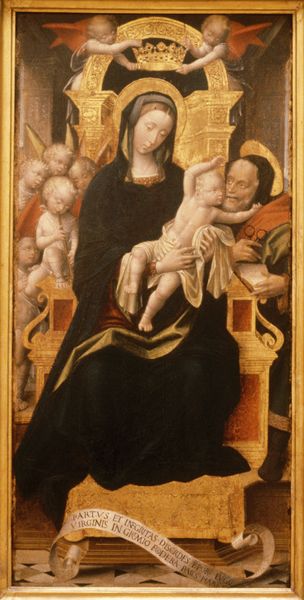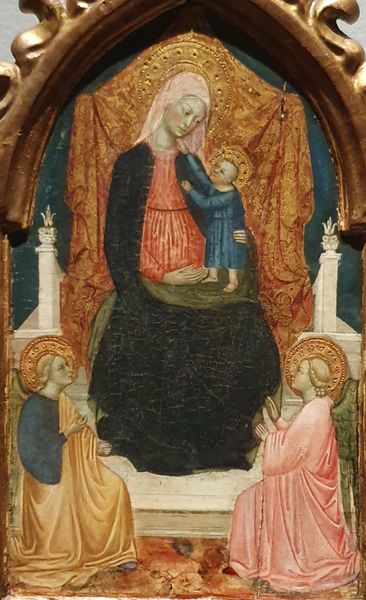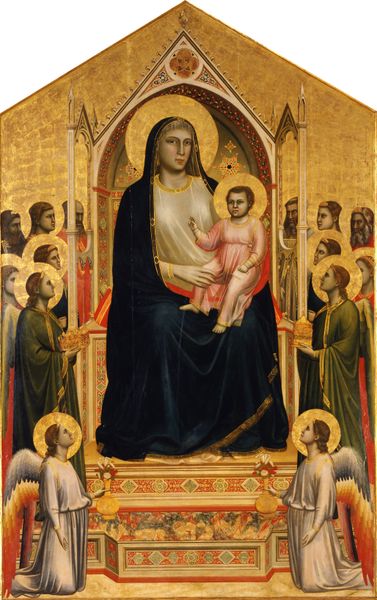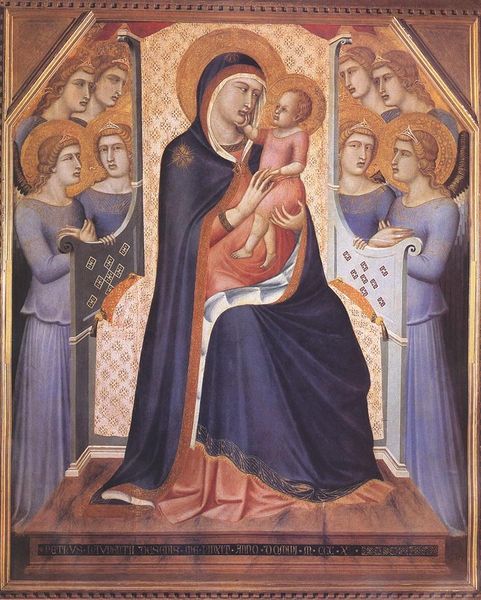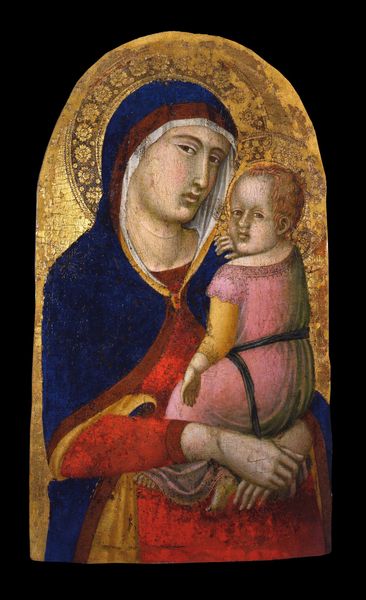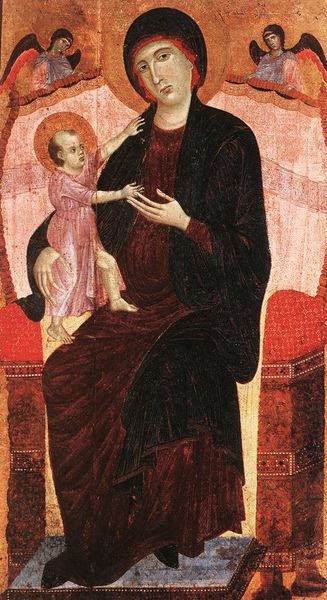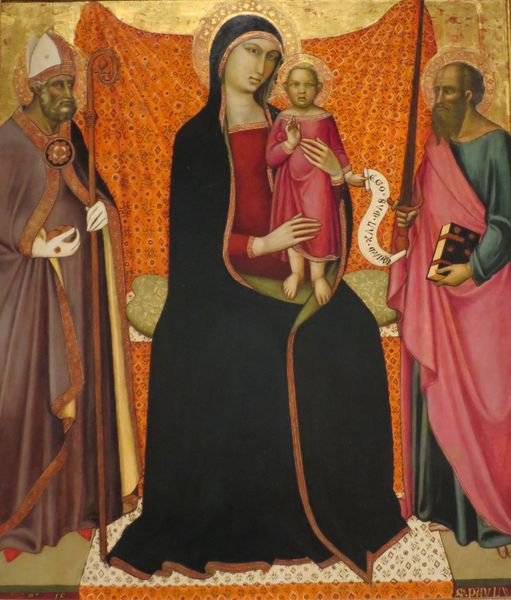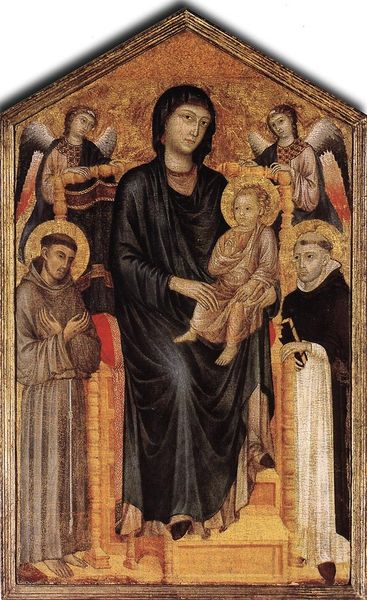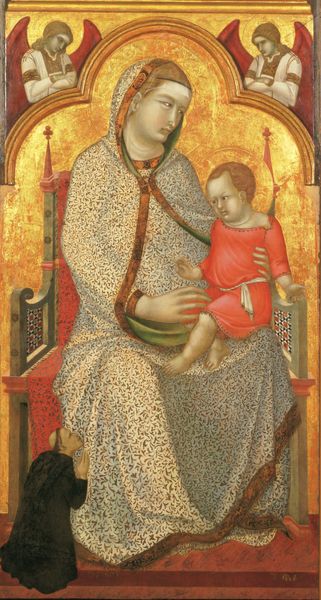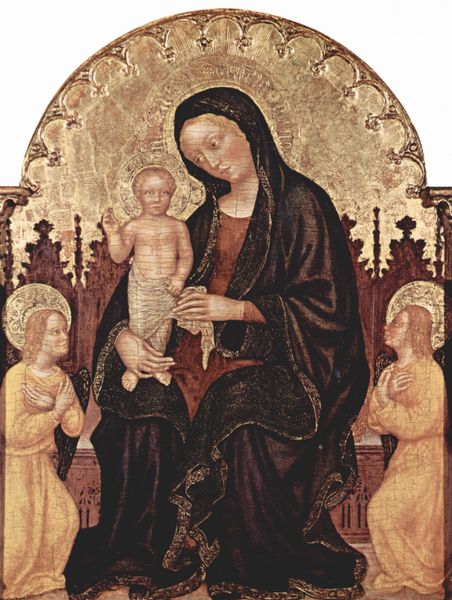
tempera, painting
#
portrait
#
medieval
#
tempera
#
painting
#
figuration
#
oil painting
#
christianity
#
early-renaissance
#
portrait art
#
virgin-mary
Dimensions: 180 x 90 cm
Copyright: Public domain
Curator: Here we have Giotto's "Madonna and Child," a tempera painting created around 1300, currently residing in San Giorgio alla Costa in Florence. Editor: My first impression is how incredibly serious they both look. The solemnity is palpable. Even the angels in the background seem burdened by the gravity of the moment. Curator: Absolutely. Giotto was one of the first to move away from the stylized figures of the medieval period, wasn’t he? He wanted to capture a sense of humanity, but it seems more focused on power than just plain reality. Editor: That shift towards a more naturalistic depiction is so critical. We see the very beginnings of what will become the Renaissance emphasis on human form and emotion. It challenges that Byzantine icon tradition of the aloof, divine figure, doesn’t it? Mary here isn't just a symbol; she embodies strength. And there are all these layers to this symbolic depiction as an allegory for human society. She is a universal mother. Curator: I agree. The heaviness, though, does intrigue me. Even with that shift towards more lifelike figures, the overall feeling isn’t exactly joyous, is it? Editor: Perhaps Giotto wanted to represent the weight of Mary’s destiny and, by extension, all mothers who bear responsibility for children's future—in that patriarchal era and to this day? There's an enduring tension between expectation and lived experience for all women reflected in this scene. What kind of impact do you think this had on women viewers? Curator: It probably made the everyday mother feel a certain degree of humility, a reminder of sacrifice... Editor: That's the perfect word: Sacrifice. That feeling extends beyond Christian iconography. Art becomes a mirror to the viewers of the period, reflecting gendered and patriarchal values, a call to be closer to god, with a powerful image of the mother figure and the potential for freedom or subservience—both! Thank you so much, this artwork reveals an invitation for so much questioning, Curator: Thank you. You opened up new layers.
Comments
No comments
Be the first to comment and join the conversation on the ultimate creative platform.

